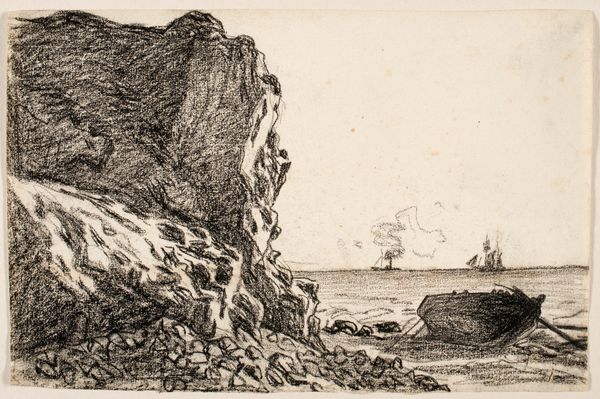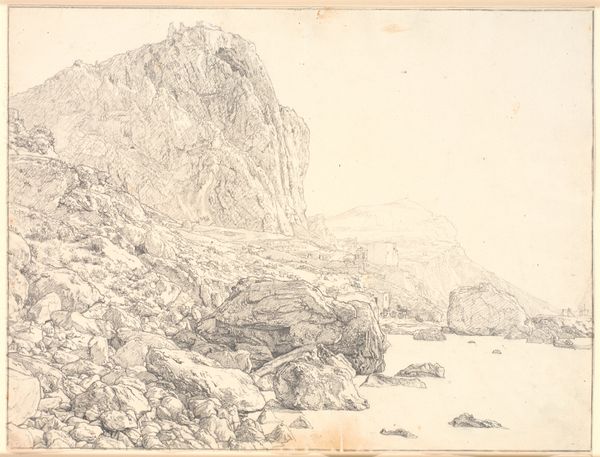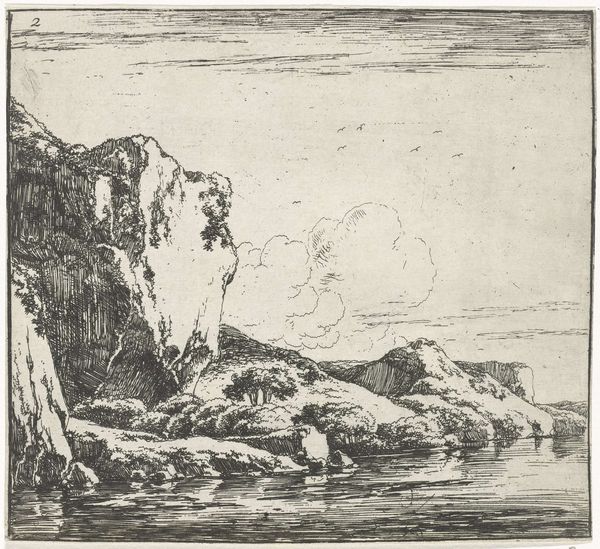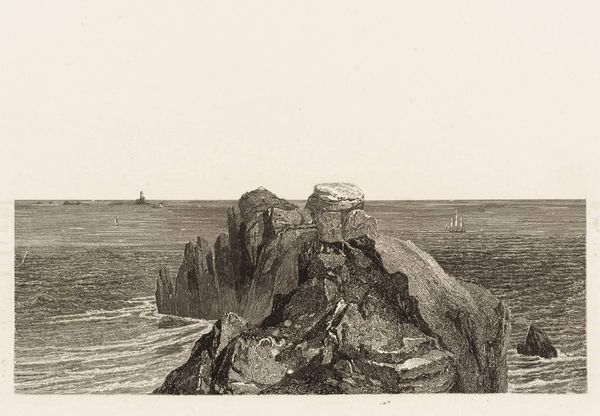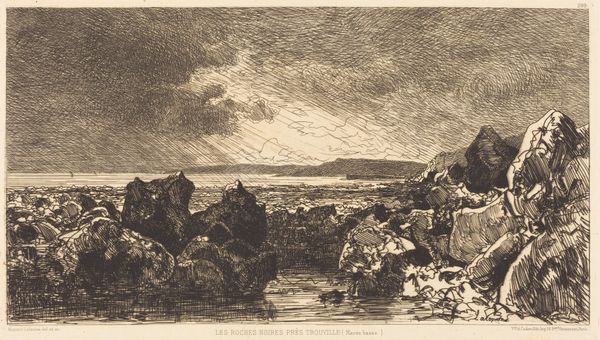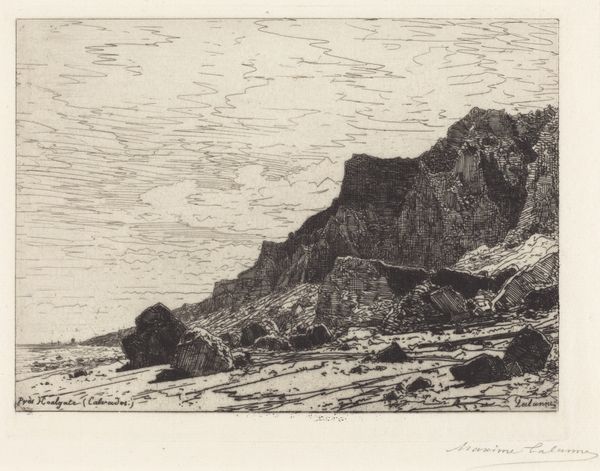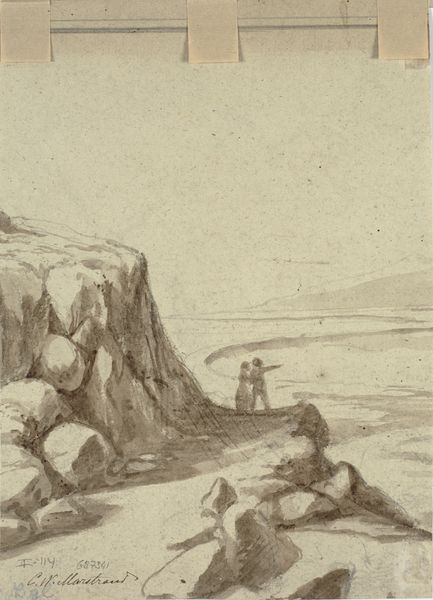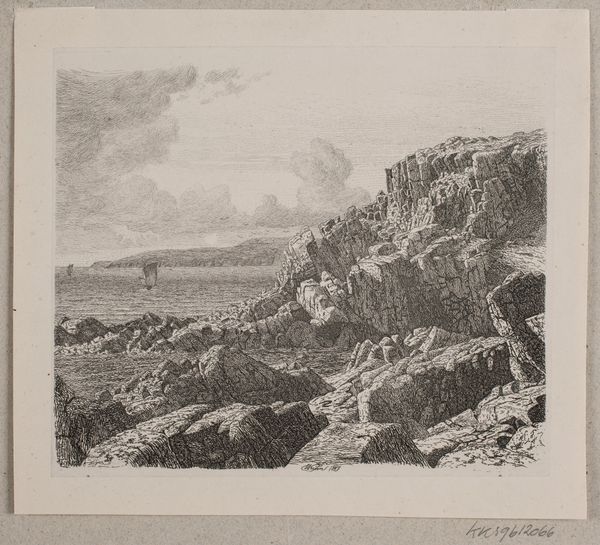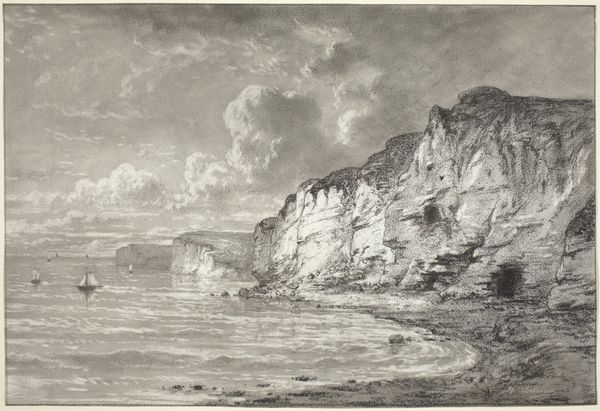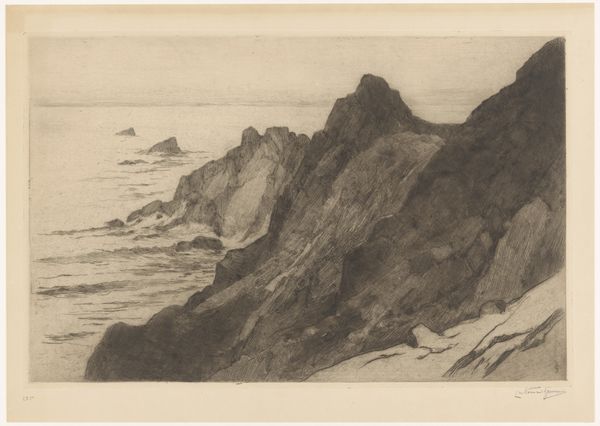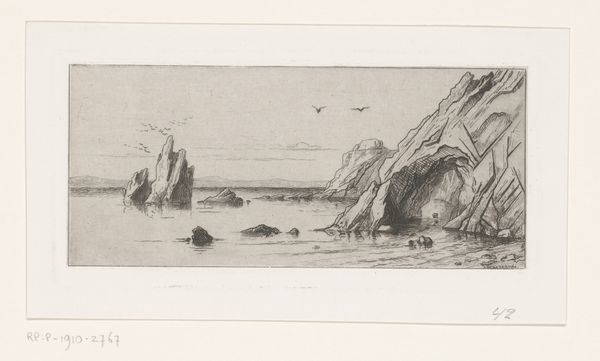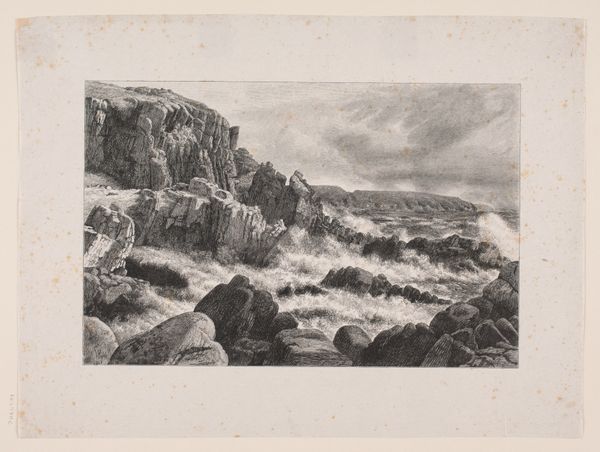
print, etching
# print
#
etching
#
landscape
#
form
#
romanticism
#
line
#
realism
Dimensions: 108 mm (height) x 154 mm (width) (bladmaal)
Curator: This is Johan Thomas Lundbye's etching from 1844, "Sydsiden af Refnæs", a scene capturing the south side of Refsnæs. It's a really evocative landscape, don't you think? Editor: Hauntingly stark. There’s almost a lunar quality to it. That craggy coastline… it’s as if the earth itself is sighing, worn out from simply existing. What story does Refsnæs hold? Curator: Well, Lundbye, deeply rooted in the Romantic era, was fascinated by the Danish landscape and national identity. Refsnæs, a peninsula in Kalundborg, offered him a microcosm of Denmark’s natural beauty. But he wasn't just documenting; he was investing these locations with emotional and symbolic weight. It was part of a broader cultural project of defining Denmark through its art and landscapes in the first half of the 19th century. Editor: So, a kind of visual nation-building, mapping identity onto topography. And it’s beautifully rendered with the sharp contrast, really nice use of line! Almost a relentless examination, an etching feels perfect for this particular terrain. You get the feeling he wasn't just looking at the scene, but digging under its surface with the needle, if that makes any sense. Curator: Absolutely! And the technique enhances the narrative. Think about the Romantic movement: nature was a powerful, often sublime force. Lundbye captures that drama. Also the stark lines emphasise a powerful landscape, almost overpowering human existence... Editor: A little bleak, yet there is a strange peacefulness too! You are right that Romantic artists definitely like big landscapes! But I wonder about the cultural implications. How was such landscape imagery circulated and consumed, shaping public perception of the nation and it's beauty? Curator: Good question! Prints like these, etchings, were relatively accessible. They appeared in art journals and were collected by a growing middle class with an interest in Danish art and history. This helped spread Lundbye's vision, connecting people to places many wouldn’t experience directly. Editor: Ah, a landscape imagined through art becomes the *real* landscape! I guess in the same way photography worked... In essence the media creates that imagined place for you... Fascinating how such detailed work creates a bridge to understanding how culture can literally form terrain in your mind! Curator: And, of course, that imagined terrain informed national consciousness. A very small print holds a nation! Editor: An incredible reminder of art's place in defining our place within the world.
Comments
No comments
Be the first to comment and join the conversation on the ultimate creative platform.

